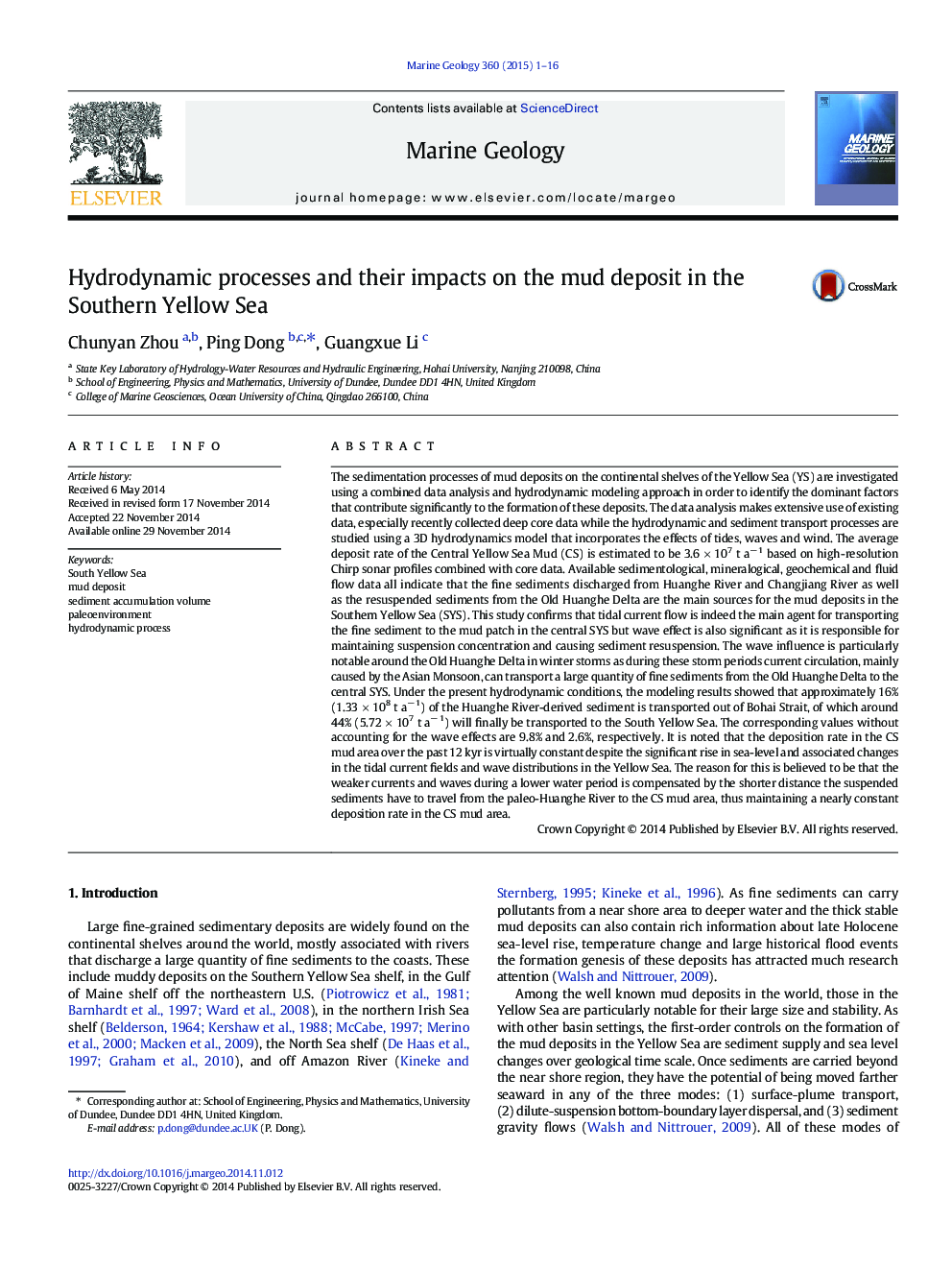| کد مقاله | کد نشریه | سال انتشار | مقاله انگلیسی | نسخه تمام متن |
|---|---|---|---|---|
| 4718208 | 1639092 | 2015 | 16 صفحه PDF | دانلود رایگان |
• The sediments from Yellow River have multiple pathways to reach the Yellow Sea.
• The average deposition rate of CS mud is estimated to be 3.6 × 107 t a− 1.
• 6.97% of the Huanghe River sediment is transported out to the South Yellow Sea.
• The nearly constant deposition rate of CS mud over the past 12 kyr period is explained.
The sedimentation processes of mud deposits on the continental shelves of the Yellow Sea (YS) are investigated using a combined data analysis and hydrodynamic modeling approach in order to identify the dominant factors that contribute significantly to the formation of these deposits. The data analysis makes extensive use of existing data, especially recently collected deep core data while the hydrodynamic and sediment transport processes are studied using a 3D hydrodynamics model that incorporates the effects of tides, waves and wind. The average deposit rate of the Central Yellow Sea Mud (CS) is estimated to be 3.6 × 107 t a− 1 based on high-resolution Chirp sonar profiles combined with core data. Available sedimentological, mineralogical, geochemical and fluid flow data all indicate that the fine sediments discharged from Huanghe River and Changjiang River as well as the resuspended sediments from the Old Huanghe Delta are the main sources for the mud deposits in the Southern Yellow Sea (SYS). This study confirms that tidal current flow is indeed the main agent for transporting the fine sediment to the mud patch in the central SYS but wave effect is also significant as it is responsible for maintaining suspension concentration and causing sediment resuspension. The wave influence is particularly notable around the Old Huanghe Delta in winter storms as during these storm periods current circulation, mainly caused by the Asian Monsoon, can transport a large quantity of fine sediments from the Old Huanghe Delta to the central SYS. Under the present hydrodynamic conditions, the modeling results showed that approximately 16% (1.33 × 108 t a− 1) of the Huanghe River-derived sediment is transported out of Bohai Strait, of which around 44% (5.72 × 107 t a− 1) will finally be transported to the South Yellow Sea. The corresponding values without accounting for the wave effects are 9.8% and 2.6%, respectively. It is noted that the deposition rate in the CS mud area over the past 12 kyr is virtually constant despite the significant rise in sea-level and associated changes in the tidal current fields and wave distributions in the Yellow Sea. The reason for this is believed to be that the weaker currents and waves during a lower water period is compensated by the shorter distance the suspended sediments have to travel from the paleo-Huanghe River to the CS mud area, thus maintaining a nearly constant deposition rate in the CS mud area.
Journal: Marine Geology - Volume 360, 1 February 2015, Pages 1–16
